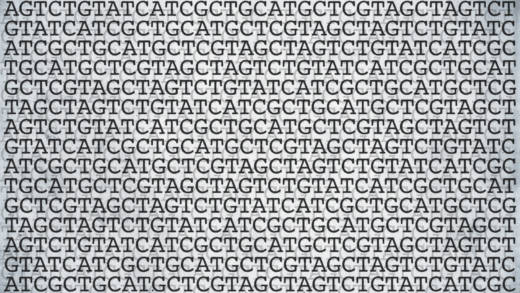But other inherited disorders need different alphabetical magic. That’s what Liu, postdoctoral fellows Nicole Gaudelli and Alexis Komor, and their colleagues report in a paper in Nature: Their new “ABE” (adenine base editor) can turn A into G. Attached to CRISPR’s bloodhound molecule, ABE works “at virtually any target site in genomic DNA,” Liu said.
In tests so far, it changed DNA in more of the lab-grown human cells that it was slipped into than standard CRISPR (for all its fame, CRISPR often bungles the job). ABE also seems to make fewer off-target edits: In one test, it mistakenly hit four of the 12 off-target sites, compared to CRISPR’s nine, and made that mistake in 1.3 percent of cases compared to 14 percent for CRISPR, Liu said.
About half of the 32,000 known disease-causing, single-letter mutations have one of the misspellings that ABE can fix, Liu said. They include sickle cell, Tay-Sachs, and cystic fibrosis, raising hopes that ABE could be used to treat these diseases, or (in early embryos) prevent them. In tests of cells growing in lab dishes, ABE reversed the mutation that causes hereditary hemochromatosis in about 30 percent of the cells, and changed another gene into a form that prevents sickle cell disease even in people who have its disease-causing mutation.
As with all forms of CRISPR, before ABE helps any patients, scientists will have to test whether it’s safe and effective. “But having the molecular machine is a good start,” said Liu, a co-founder of the CRISPR company Editas Medicine. He and colleagues have filed for patents on ABE.
Harvard biologist George Church, who tied for first in the race to make CRISPR work in human cells, called base editing “especially interesting.” Changing a single DNA letter, he said, means “fewer worries about the editing enzyme [in classic CRISPR] later going rogue or silent.” He also expects that crops with a single base change will not be designated as “transgenic,” reducing regulatory barriers to commercialization.
In a separate study, CRISPR pioneer Feng Zhang of the Broad Institute and his colleagues discovered a new version of CRISPR that can edit RNA, DNA’s friskier cousin. While DNA mostly sits sedately in cells and issues orders to make proteins that keep life living, RNA zips around the cell carrying out those orders, and then disappears. That makes RNA a tantalizing target: By editing the errant orders (RNA) rather than their issuer (DNA), scientists might be able to make temporary, reversible genetic edits, rather than CRISPR’s permanent ones.
“Editing DNA is hard to reverse, but once you stop providing the RNA-editing system, the changes will disappear over time,” said Zhang, also a co-founder of Editas. “That might make it possible to treat conditions where you don’t need a permanent edit,” such as when the immune system is in overdrive and causing inflammation.
To create what Zhang and his colleagues call REPAIR (“RNA editing for programmable A to I [G] replacement”), they fused an enzyme that binds to RNA with one that changes the RNA letter A (adenosine) to inosine, a molecule similar to the RNA letter G (guanosine), they report in Science. Other labs, including that of CRISPR developer Jennifer Doudna of the University of California, Berkeley, have also developed RNA editors, including one using the same Cas13 enzyme. But REPAIR’s creators say theirs is more efficient and less error-prone.
In tests on human cells growing in the lab, REPAIR corrected misspellings in the RNA that was made by disease-causing DNA — in this case, Fanconi anemia, an inherited and devastating bone marrow disease, or nephrogenic diabetes insipidus, a serious inborn kidney disease. Although the DNA still had its disease-causing mutations, 23 percent and 35 percent, respectively, of the RNA made by those defective genes was REPAIR’ed. Those levels might be high enough to treat the diseases. Some 5,800 inherited diseases are the result of the G-to-A glitch that REPAIR can fix, including epilepsy and Duchenne muscular dystrophy.
Both REPAIR and ABE might venture where CRISPR stumbles: in mature cells, like neurons, that don’t divide. In unpublished research, Liu said, he and his team have shown that ABE can edit genes in neurons, raising the possibility of treating devastating neurological diseases with ABE.
The furious race to improve CRISPR, via ABE or REPAIR or whatever comes next, Church said, are “potent reminders of how far CRISPR is from precise genome-editing in humans.”

